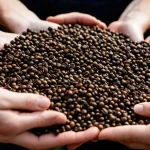Essential Ingredients and Preparation
Selecting quality steak and kidney is fundamental to a delicious pie. Opt for fresh, lean stewing steak with a good balance of fat for flavour and tenderness. When choosing kidney, lamb or beef kidneys both work well, but ensure they are fresh and have a clean, non-strong aroma. Proper preparation and handling of offal is crucial for safety and taste. Thoroughly rinse kidneys under cold water and soak them in milk or water with a splash of vinegar for 30 minutes to reduce any strong flavours and remove impurities.
In addition to steak and kidney pie ingredients, gather supporting elements like onions, carrots, and celery for a rich vegetable base. Herbs such as thyme and bay leaves enhance depth, while seasoning with salt and pepper balances the profile. For the pastry essentials, ensure you have quality butter or lard and flour to craft a tender crust. Preparing all ingredients ahead, including dicing meat and chopping vegetables, streamlines the cooking process and ensures even cooking. Proper ingredient selection and meticulous preparation are the cornerstones of a memorable steak and kidney pie.
Topic to read : How can you recreate a pub-style ploughman’s lunch at home?
Preparing the Steak and Kidney Filling
Proper meat preparation is key to a succulent filling in your steak and kidney pie. Begin by cutting the stewing steak and kidney into uniform pieces around 1 to 1.5 inches. This ensures even cooking, preventing some parts from becoming tough while others overcook. Removing any sinew or excess fat from the kidney also improves texture and taste.
Next, browning the meat in batches over medium-high heat develops rich, caramelised flavours through the Maillard reaction. Avoid overcrowding the pan to ensure meat sears rather than steams. Browning both steak and kidney separately before combining gives the filling depth and complexity.
Additional reading : How can you make a flavorful and rich beef Wellington?
Simmering follows, where the browned meat meets the aromatic vegetables and herbs prepared earlier. A slow simmer on low heat, ideally for 1.5 to 2 hours, allows collagen in the beef to break down, tenderising the meat and thickening the sauce. Adding a thickening agent such as flour or arrowroot during the final minutes brings the filling together with a luscious consistency. The careful balance of these steps guarantees a steak and kidney pie filling that is tender, flavourful, and well-textured.
Crafting and Rolling the Pastry
Creating the pastry for steak and kidney pie sets the foundation for a tender, flaky crust. Start with a classic shortcrust pastry recipe, combining cold butter and flour to achieve a crumbly texture. The key is to handle ingredients quickly to prevent butter melting, which ensures flakiness. Adding a pinch of salt enhances flavour, while ice-cold water binds the dough just enough without making it tough.
Once the dough forms, chill it for at least 30 minutes. This resting period is crucial as it firms the butter, making the pastry easier to roll and reducing shrinkage during baking. When rolling, aim for an even thickness around 3-5 mm to promote uniform cooking and crisp layers.
Avoid the common mistake of overworking the dough; this activates gluten, leading to a chewy crust rather than a delicate one. To prevent a soggy bottom, consider blind baking the base briefly or pricking it with a fork before adding the filling. These pastry tips guarantee a structurally sound, golden crust that perfectly complements the rich steak and kidney filling.
Assembling and Baking the Pie
Proper assembling steak and kidney pie is essential to maintain filling integrity and achieve a perfect bake. Start by lightly greasing your pie dish before lining it with the chilled base pastry. This prevents sticking and supports lifting the pie out after baking.
Spoon the prepared filling evenly into the pastry shell, ensuring no gaps to avoid shrinkage during cooking. Leave a small gap at the edges to allow sealing. Next, cover with the rolled top pastry and press edges firmly to seal; crimping creates both a strong bond and an attractive finish. To prevent steam buildup inside the pie, cut a small vent hole or decorative slits in the top crust. This avoids sogginess and promotes an even, golden bake.
Bake at around 200°C (400°F) for 30-40 minutes until the pastry is crisp and deeply golden. Visual cues like bubbling filling through vents signal doneness. For precise results, start checking at 25 minutes. Proper baking technique locks in flavours of the hearty steak and kidney filling, while delivering that classic flaky crust.
Finishing Touches and Serving Suggestions
Allowing the steak and kidney pie to rest for 10-15 minutes after baking is essential. This pause lets the filling thicken slightly, making slicing neater and serving easier. Resting also helps the flavours meld, enhancing the pie’s rich taste.
When garnishing, simple additions like fresh parsley or thyme sprigs brighten the presentation without overwhelming the pie’s robust flavours. A light brush of melted butter on the crust after baking can add an appealing sheen and extra richness.
For side dishes, classic choices complement the pie well. Creamy mashed potatoes or buttery peas balance the hearty filling with their smooth texture. Seasonal roasted vegetables or a crisp green salad can add freshness and contrast.
Portion size should be generous but mindful—aim for servings that satisfy without overwhelming, especially if paired with multiple sides. These serving tips elevate both the flavour experience and visual appeal, ensuring your steak and kidney pie is enjoyed to its fullest potential.





